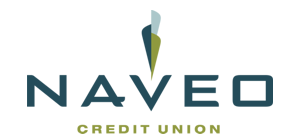Frequently Asked Questions
A home equity line of credit (HELOC) is an open-ended revolving line of credit, enabling you to borrow funds up to your available credit limit. The line is secured by the equity in your home. Because it is a revolving line, it is the most flexible type of home financing available: as you make payments on the line, you free up your credit limit and increase the amount you can borrow.
- It must be secured by your primary or vacation home.
- Currently there is a special low introductory interest rate fixed for the first twelve months.
- After the introductory period, the interest rate becomes variable, changing monthly with the Wall Street Journal Prime Rate.
- A HELOC has 2 different phases, a draw period and a repayment period.
- The draw period is the initial 10 years of the loan, when you have ongoing access to available funds up to the credit limit.
- Once the draw period ends, the line enters the repayment period, a new ten-year period when you can no longer borrow new funds, and must start making monthly payments to reduce the principal balance on the line of credit.
- The minimum monthly payment amount during the draw period is interest due on the outstanding principal balance, with a minimum $50.00 payment.
- During the repayment period, you must make principal and interest payments based on the balance owed at the time the repayment period begins. The new minimum payment will ensure the outstanding balance is paid in full by the maturity date.
- Annual maintenance fee of $45.
Because your HELOC is based on a variable rate, your monthly payments will vary.
- During the draw period (the first ten years), when you can borrow and repay multiple times, your minimum monthly payment will be interest accrued based on the outstanding principal balance. Although only interest is due, we encourage you to pay more than the minimum amount due, in order to rebuild the equity in your home and free up available credit on your line for future borrowing needs.
- During the repayment period (the last ten years), your monthly payment will be a combination of principal and interest to repay the outstanding balance by the maturity date.
Payments are due on the 25th of each month.
You can borrow as little as $25,000 or up to $250,000. The actual credit limit will be determined by:
- your credit history,
- the amount of available equity in your home, and
- your current monthly debt obligations.
The equity in your home against which you can borrow (the HELOC credit limit) is 80% of the appraised value of your residence, less the balance on your 1st mortgage balance and any other liens against the property.
Example: Value of Home $500,000.00 X 80% = $400,000.00 – 1st Mortgage $275,000.00 = $125,000.00 (Equity in your home)
A HELOC allows you to tap into your home’s equity for cash to pay for any legal purposes. Here are some popular uses of HELOC borrowings:
- Home improvement or renovation
- College tuition
- Consolidate high-interest debt
- Pay off credit card debt
Yes, you can use a HELOC to pay off your mortgage. If your HELOC has a better interest rate than your mortgage and you can pay off the loan within the draw period before rates go up, then it could be a good option. However, keep in mind that the HELOC has a variable interest rate, whereas most regular mortgages have a fixed rate.
Yes, you can use a HELOC for a down payment on an investment property. Just note that lenders look at your debt-to-income ratio (DTI, total monthly debt obligations as a percentage of gross monthly income) to determine if you qualify for new loans. Carefully consider whether you’ll be able to meet the monthly payment obligation of a HELOC with the rental/investment income. If the DTI ratio is too high, you may be putting your home in jeopardy. A guideline suggested by Federal regulations for a manageable DTI is 43% or less.
There are a few requirements to qualify for a HELOC.
- You need to have sufficient equity in your home. This is measured by your loan-to-value (LTV) ratio, which is the ratio of what you owe on your mortgage divided by your home’s market value. The maximum LTV is 80%
- A good credit score is also important to determine your eligibility and interest rate. The best rates are available if your credit score is 720 or higher.
- You need regular income sufficient to pay for your current monthly liabilities and the new HELOC. A good DTI ratio is 43% or less.
Credit scores will impact the interest rate you receive. Credit scores of 720 or higher are eligible for our best premium pricing. Standard pricing will apply for credit scores between 700-720. For scores below 699, a higher rate may apply. Even if you have had credit history problems, you may still be able to qualify for a HELOC depending on your financial situation and other criteria, but the interest rate may be higher.
When you are ready, you can apply online, in person or by phone at 617-702-5142.
Please see our Home Equity Line of Credit Application Documentation Checklist.
Yes, in most cases we require a drive-by appraisal, which does not require an inspection of the interior of your home. The appraisal determines the amount of available equity and helps us establish a credit limit for your HELOC.
Closing costs vary with each application, and include fees for a credit report, a flood certification, an appraisal, document preparation, title search and recording charges at the local county registry. Generally, the closing costs are less than $700. Naveo offers a no-closing-cost option, which requires a minimum HELOC credit limit of $25,000 and a minimum initial advance of $15,000.00 within the first 90 days. If you pay off and close the HELOC within the first 36 months, you will need to repay those closing costs.
It varies depending on your situation. Generally, it will take between 2-4 weeks to close a HELOC once you have submitted your application and the required supporting documents.
No, not all owners need to be obligated on the loan. However, everyone listed on the deed must sign off on the mortgage and be present at the closing.

